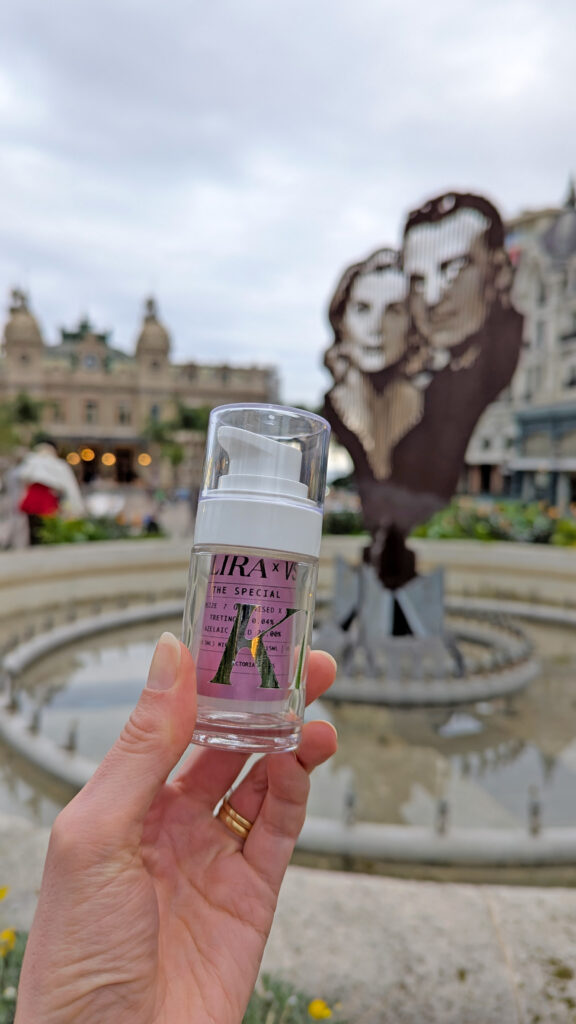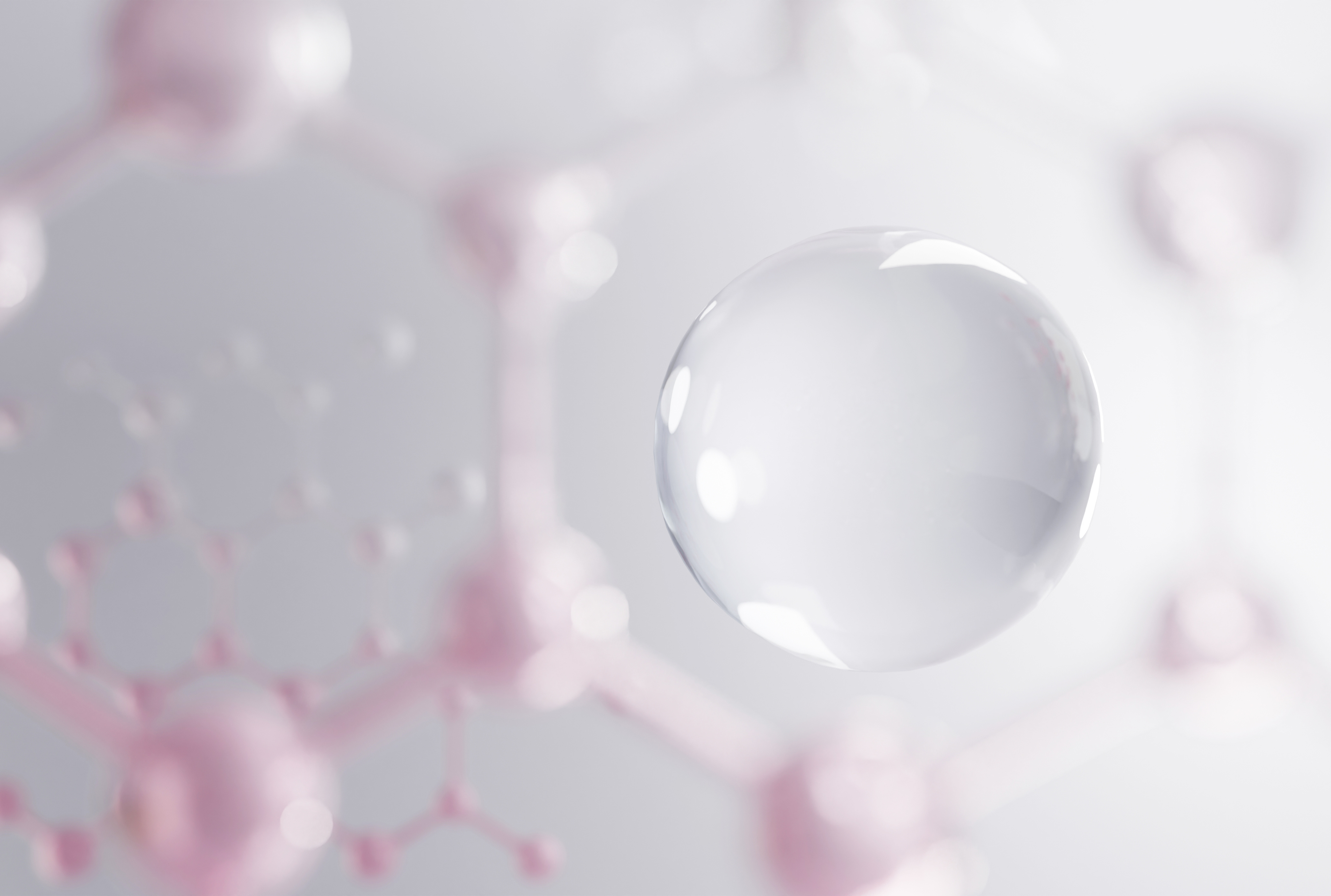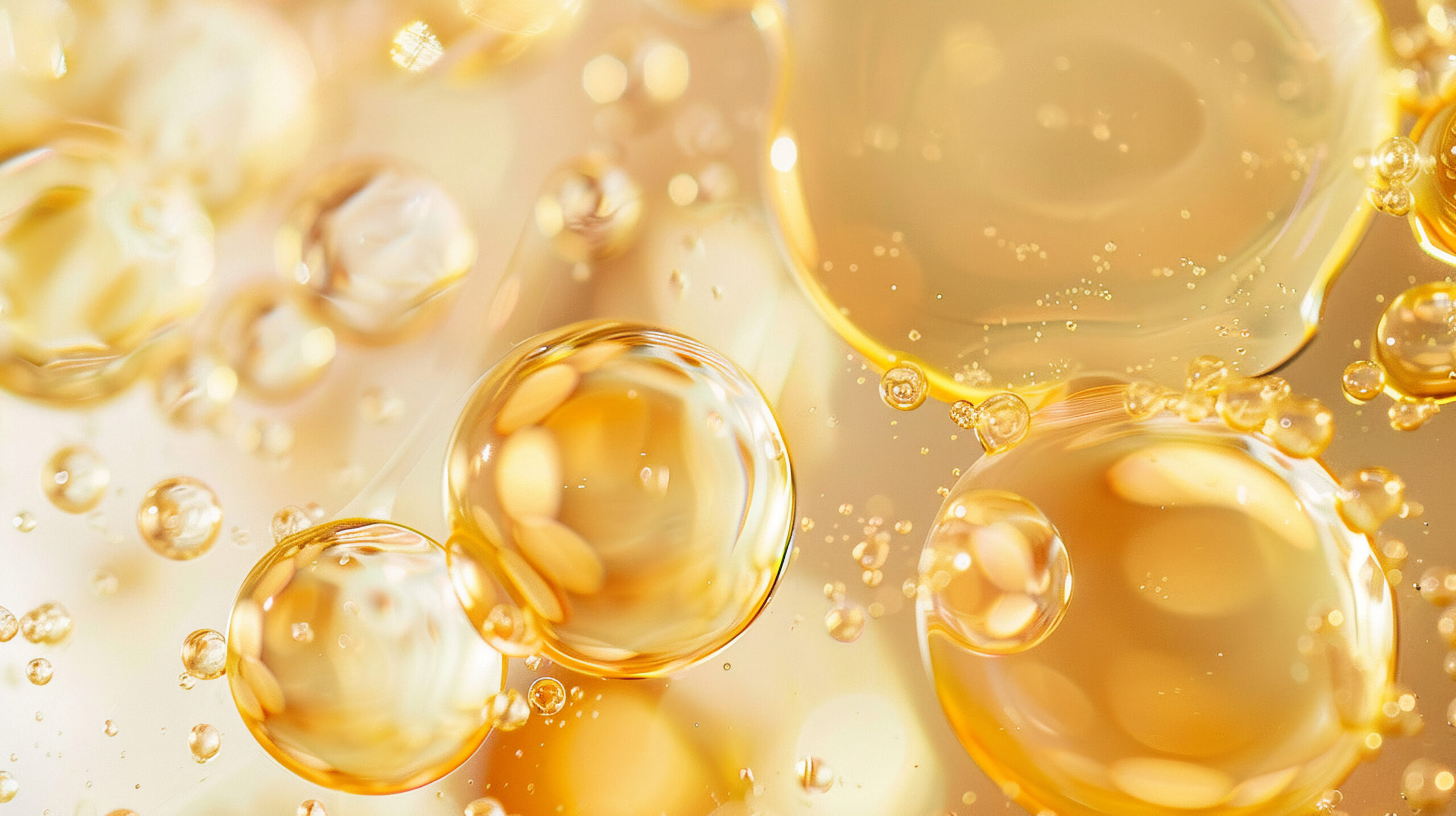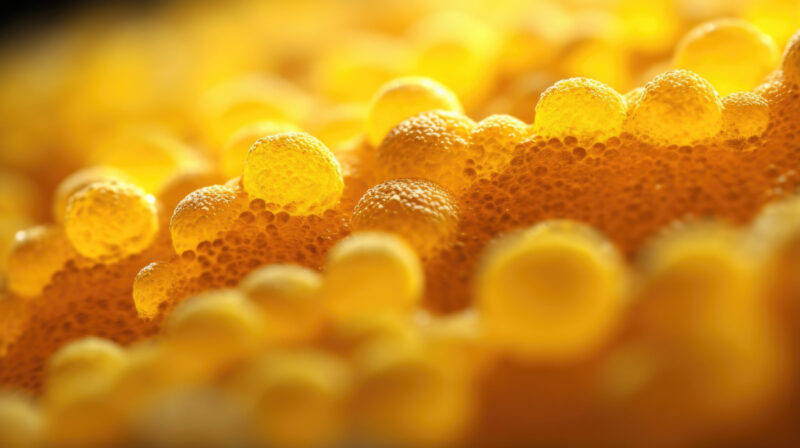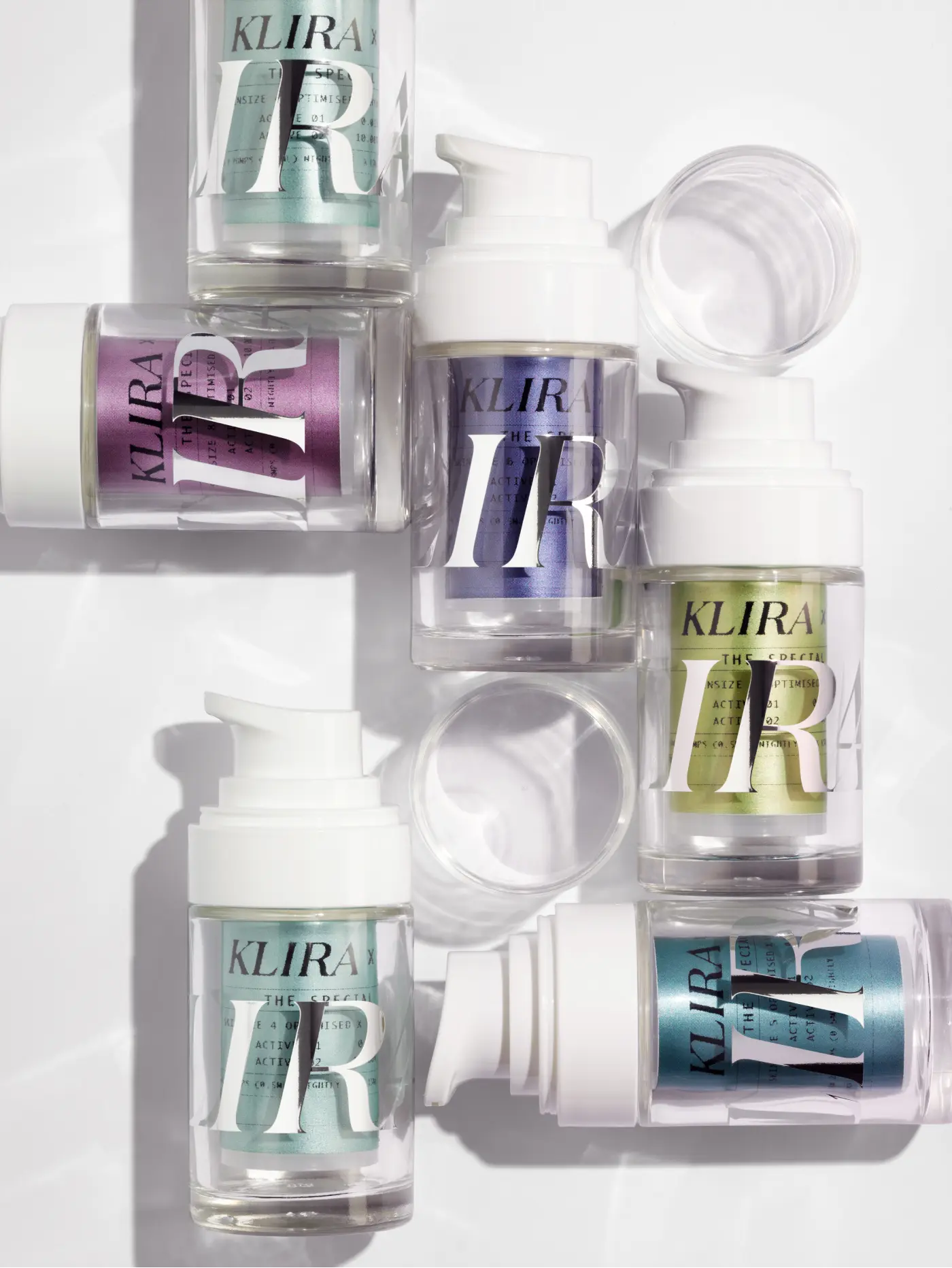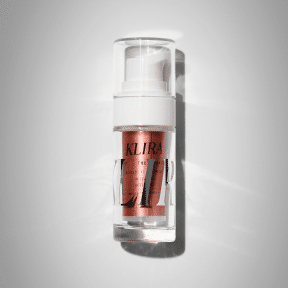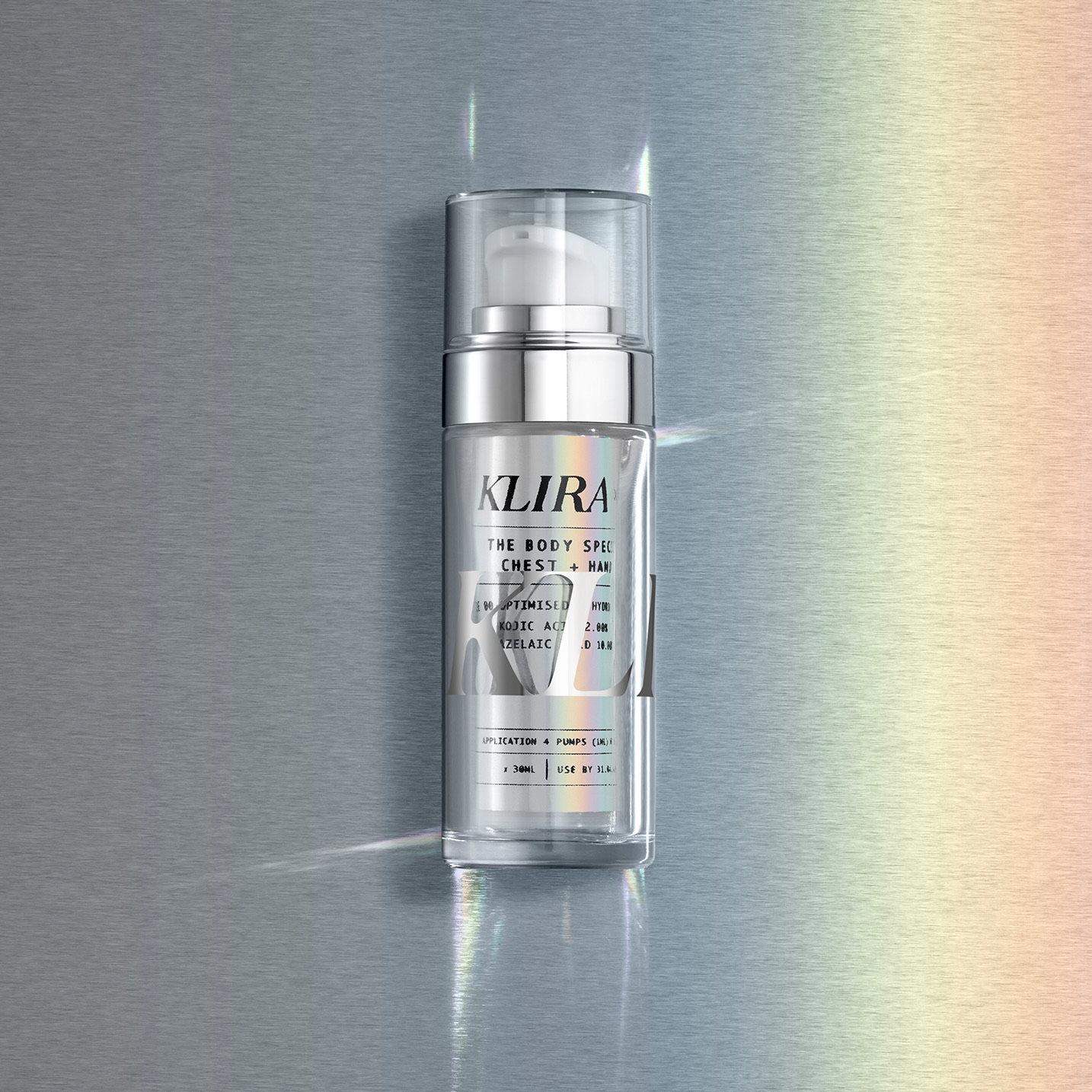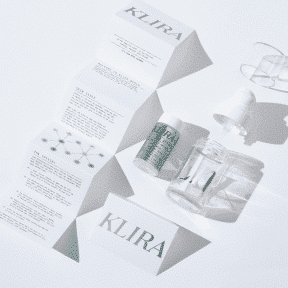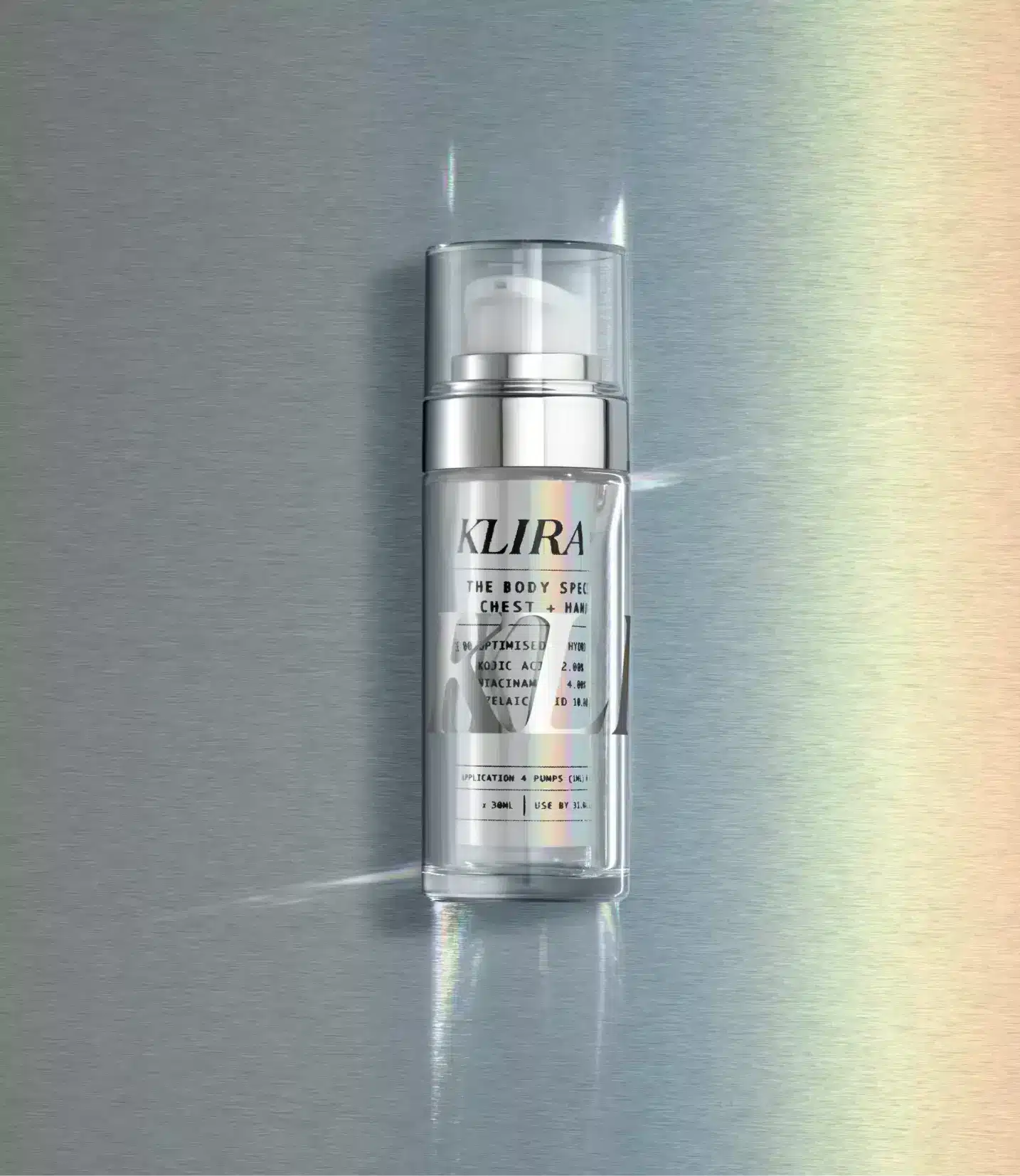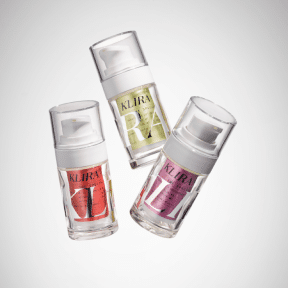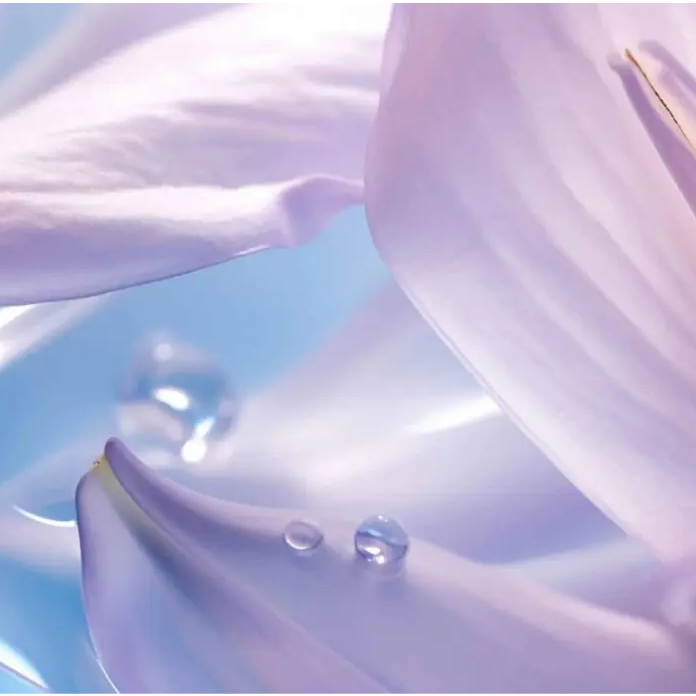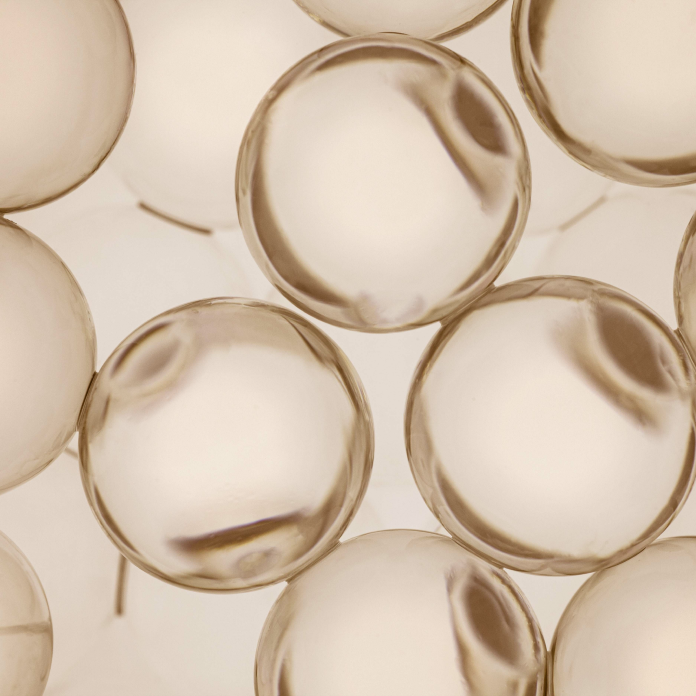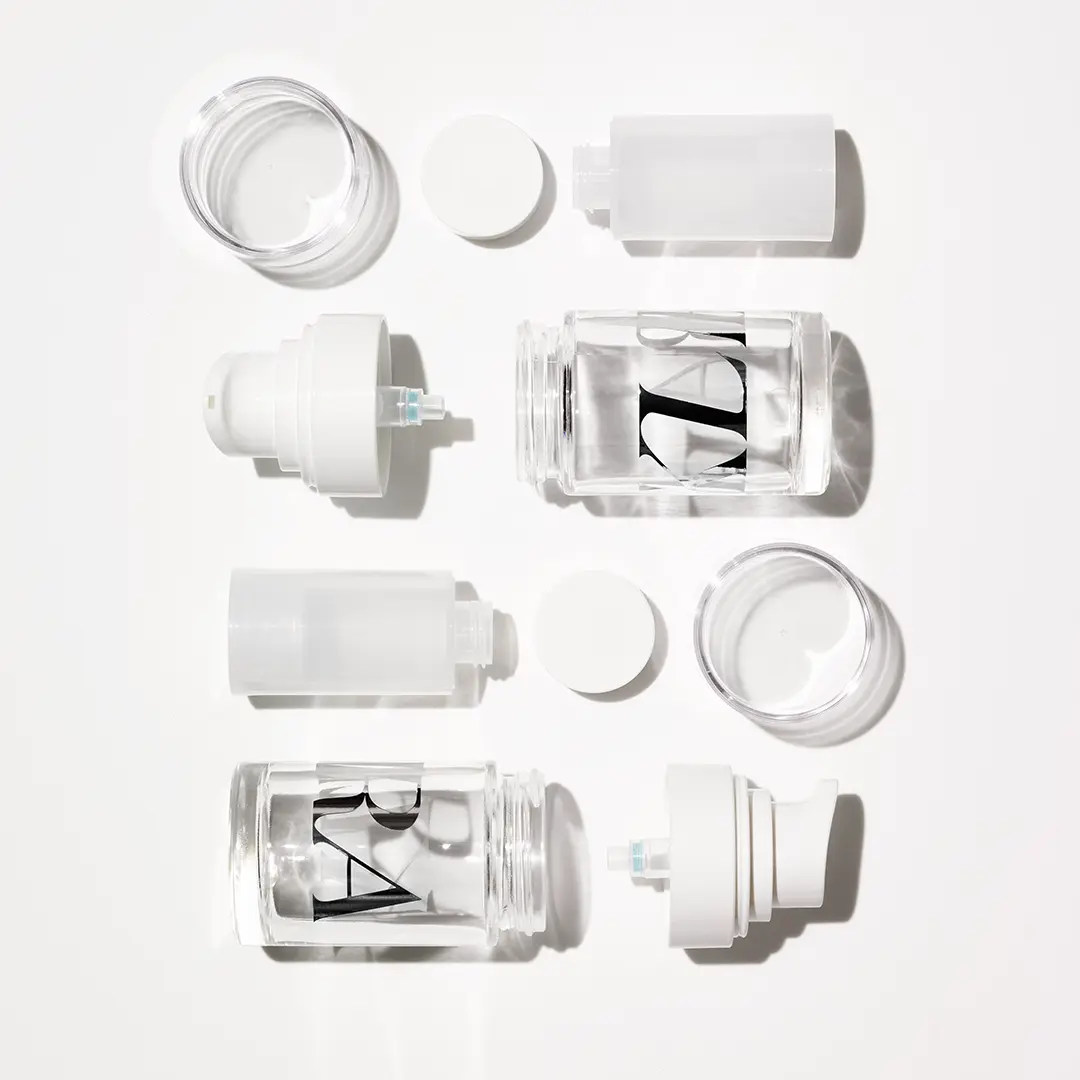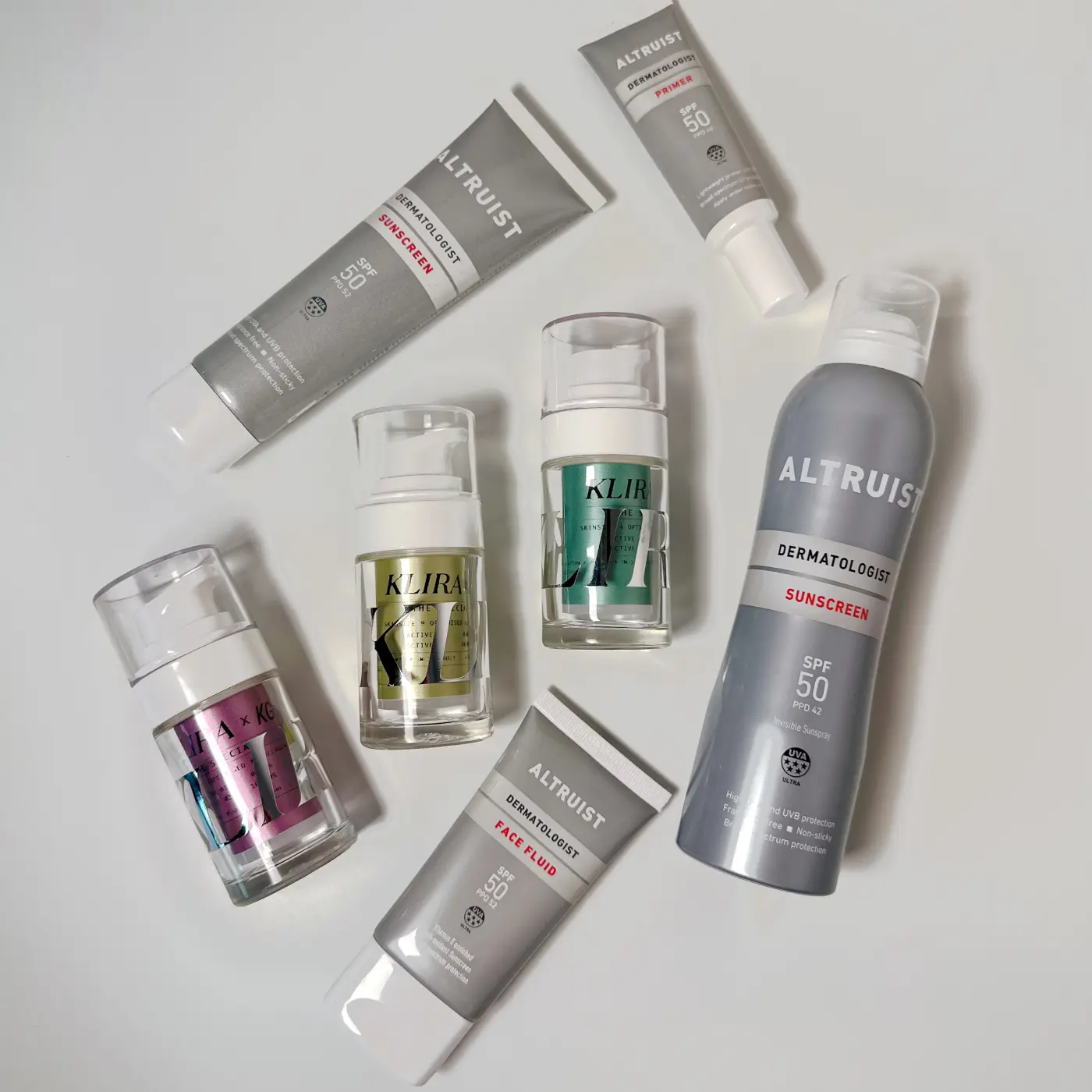
Klira Personalised Skincare and Altruist Sunscreen have teamed up to explain how our products work in harmony with each SkinSize. Discover your SkinSize and see which SPF is recommended by the only suncare brand founded by a skin cancer surgeon and Consultant Dermatologist.
SkinSize™ /01 — Unpredictable
This SkinSize is particularly tricky, often presenting with a range of sensitivities. Managing one issue can sometimes exacerbate another, making it challenging to maintain balance.
Risks: Hyper-sensitivity, Flushing, Acne, Rosacea, Hyperpigmentation, Melasma, Seborrhoeic dermatitis
Goals: Protect the skin barrier, prevent sebum blockages, tackle uneven pigmentation, and prevent future damage.
Your recommendation is Altruist SPF50 Face Fluid because it is lightweight, broad-spectrum coverage (ultra-high UVA protection PPD52) that suits a variety of skin types and is designed with sensitive skin in mind.
SkinSize™ /02 — Adaptable
With a strong skin barrier but prone to excess sebum and blocked pores, SkinSize™ 02 can develop brown marks after spots or injury.
Risks: Acne, Hyperpigmentation, Melasma, Perioral dermatitis, Seborrheic dermatitis
Goals: Treat effectively through the strong barrier, prevent sebum blockages, and address uneven pigmentation.
Your recommendation is Altruist SPF50 Face Primer because it is particularly suited for people with excess sebum. It is non greasy and provides excellent broad spectrum UV protection.
SkinSize™ /03 — Keep Safe
This SkinSize requires careful management due to its sensitivity and tendency for excess sebum production. Certain products can lead to inflammation, complicating treatment.
Risks: Acne, Early skin ageing, Rosacea, Seborrheic dermatitis
Goals: Prevent sebum blockages, optimise the skin barrier, and protect against future damage.
Your recommendation is Altruist SPF50 Face Fluid because lightweight, broad-spectrum coverage (ultra-high UVA PPD52 protection) that suits a variety of skin types and is designed with sensitive skin in mind.
SkinSize™ /04 — Easy Breezy… as long as you remember the SPF
Generally easy to manage, SkinSize™ 04 is primarily affected by blocked follicles due to excess sebum. Regular SPF is essential to maintain its health.
Risks: Acne, Early wrinkles, Seborrhoeic dermatitis
Goals: Use SPF diligently to prevent early ageing and manage sebum production.
Your recommendation is Altruist SPF50 Face Primer because it is particularly suited for people with excess sebum. It is non greasy and provides excellent broad spectrum UV protection.
SkinSize™ /05 — Complicated
Characterised by sensitivity, dryness, and a tendency for hyperpigmentation, SkinSize™ 05 requires a delicate balance of hydration and barrier strengthening.
Risks: Eczema, Hyperpigmentation, Flushing, Ingredient sensitivity, Early wrinkling, Rosacea, Melasma, Perioral dermatitis
Goals: Hydrate and moisturise without irritation, strengthen the barrier, and protect against inflammation and hyperpigmentation.
Your recommendation is Altruist SPF50 Face Fluid or Altruist SPF50 Sunscreen Cream (both ultra-high UVA protection PPD52). The Face Fluid is a more lightweight, so if you are layering with makeup, moisturiser or serum this is the one for you; the SPF50 Cream is slightly richer and for those with drier skin tendencies or who want a more hydrating sunscreen.
SkinSize™ /06 — Parched
Prone to dryness and sensitivity, SkinSize™ 06 needs careful hydration and protection against hyperpigmentation.
Risks: Eczema, Hyperpigmentation, Ingredient sensitivity, Rosacea, Perioral dermatitis, Melasma
Goals: Hydrate deeply, strengthen the barrier, and treat inflammation while preventing further damage.
Your recommendation is the Altruist SPF50 Sunscreen Cream because is features a very hydrating formula, alongside broad spectrum UV coverage.
SkinSize™ /07 — Hyperactive
With fluctuating cellular activity, SkinSize™ 07 often experiences dryness, hyperpigmentation, and collagen breakdown.
Risks: Hyperpigmentation, Solar lentigines, Early ageing, Melasma
Goals: Ensure proper sun protection and treat areas of hyperpigmentation.
Your recommendation is Altruist SPF50 Face Fluid and Altruist SPF50 Sunscreen Cream. The Face Fluid is more lightweight, so if you are layering with makeup, moisturiser or serum this is the one for you; the SPF50 Sunscreen Cream is slightly richer and for those with drier skin tendencies or who want a more hydrating sunscreen.
SkinSize™ /08 — Prized
This SkinSize features low sebum production with strong collagen synthesis but is prone to hyperpigmentation and dryness.
Risks: Hyperpigmentation, Solar lentigines, Dryness, Dull skin, Melasma
Goals: Maintain optimal hydration, treat hyperpigmentation, and protect from future damage.
Your recommendation is Altruist SPF50 Face Fluid and Altruist SPF50 Sunscreen Cream. The Face Fluid is more lightweight, so if you are layering with makeup, moisturiser or serum this is the one for you; the cream is slightly richer and for those with drier skin tendencies or who want a more hydrating sunscreen. Both provide high factor protection to protect against hyperpigmentation.
SkinSize™ /09 — Delicate
Sensitive and often dry, SkinSize™ 09 is particularly vulnerable to UV damage and needs nourishing care.
Risks: Eczema, Solar lentigines, Ingredient sensitivity, Early wrinkling, Rosacea, Perioral dermatitis
Goals: Hydrate to reduce sensitivity, support collagen synthesis, and prevent inflammation.
Your recommendation is Altruist SPF50 Face Fluid and Altruist SPF50 Sunscreen Cream. The Face Fluid is more lightweight, so if you are layering with makeup, moisturiser or serum this is the one for you; the Sunscreen Cream is slightly richer and for those with drier skin tendencies or who want a more hydrating sunscreen. Both provide high factor protection and formulated with sensitive skin in mind.
SkinSize™ /10 — Gifted
SkinSize™ 10 requires careful control to manage its tendency for flushes and flares, with a focus on maintaining hydration and reducing sensitivity.
Risks: Eczema, Ingredient sensitivity, Rosacea, Perioral dermatitis
Goals: Maintain a well-hydrated barrier, protect from future damage, and manage inflammation.
Your recommendation is Altruist SPF50 Face Fluid and Altruist SPF50 Sunscreen Cream. The Face Fluid is a more lightweight, so if you are layering with makeup, moisturiser or serum this is the one for you; the Sunscreen Cream is slightly richer and for those with drier skin tendencies or who want a more hydrating sunscreen. Both provide high factor protection (with PPD52 ultra-high UVA protection) and formulated with sensitive skin in mind.
SkinSize™ /11 — Fortunate
This SkinSize™ boasts a strong barrier but can be prone to dryness, often unnoticed. It’s important to keep it well-protected for the future.
Risks: Solar lentigines, Dryness, Early wrinkling, Adult female acne, Early rosacea
Goals: Keep the skin hydrated, support collagen, and protect against future damage.
Your recommendation is Altruist SPF50 Sunscreen Cream because it comes in a lovely hydrating formula to help nourish the skin, alongside its fantastic broad spectrum UV coverage (PPD52).
SkinSize™ /12 — The Jackpot
Typically problem-free, SkinSize™ 12 has a strong barrier and good collagen production but may suffer from dryness if neglected.
Risks: Poor absorption of active ingredients, Dryness, Complacency with SPF, Adult female acne
Goals: Address dryness, optimise hydration, and protect against future damage.
Your recommendation is Altruist SPF50 Cream because it comes in a lovely hydrating formula to help nourish the skin, alongside its fantastic broad spectrum UV coverage (ultra-high PPD52).
Our Dermatology Team will review your SkinSize™ Analysis, medical information, and photos to decide which ingredients you will receive in your bespoke formula.


